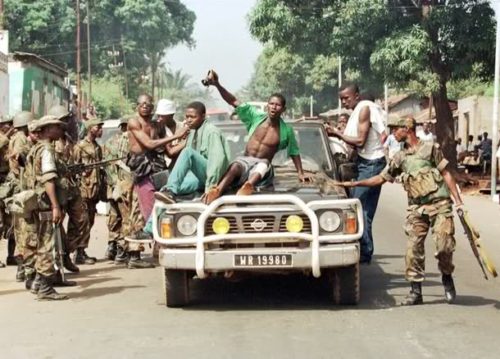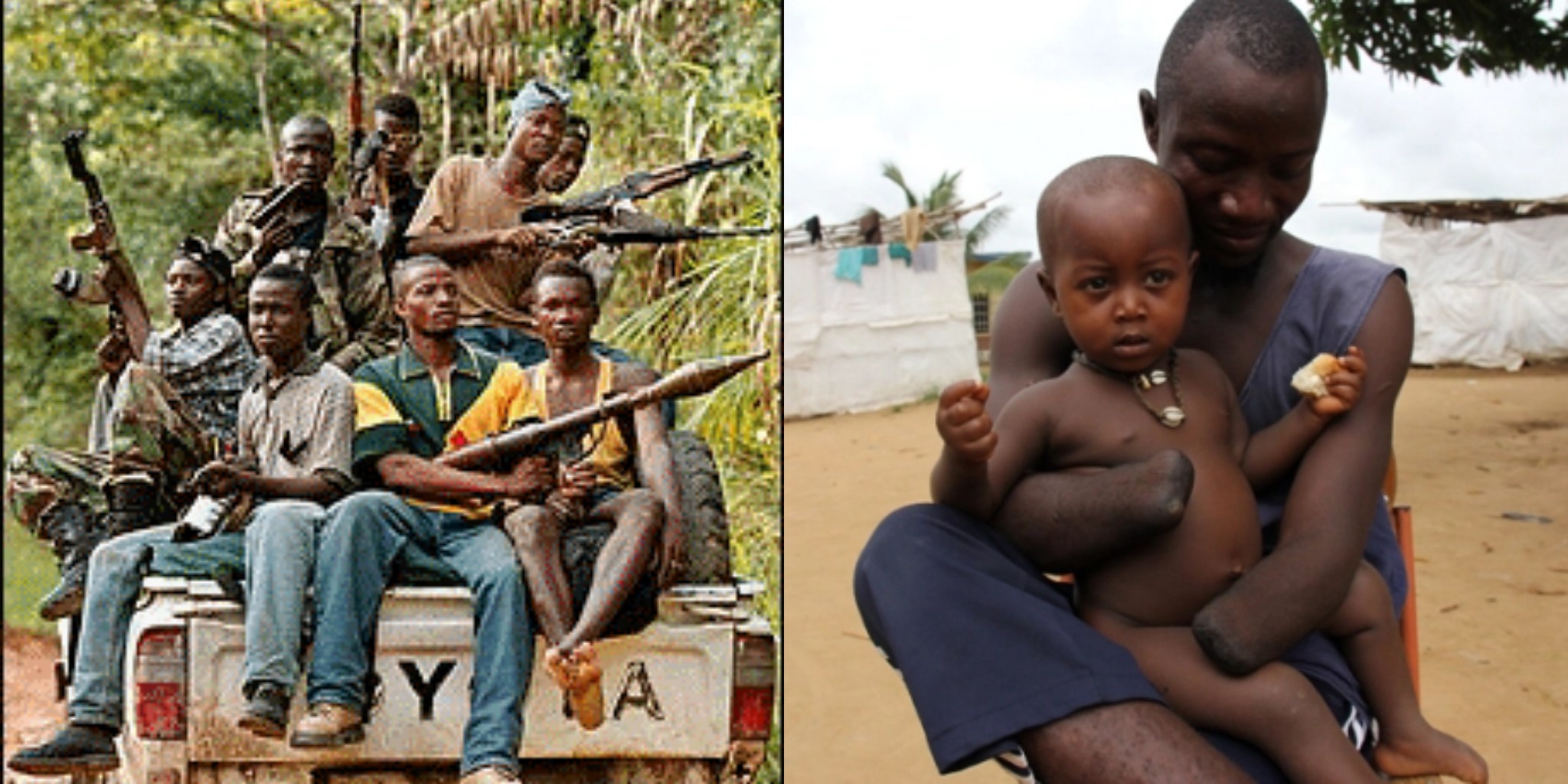On this day, March 23 1991 the war began, when the Revolutionary United Front (RUF) under Foday Sankoh, with support of Liberian rebel leader Charles Taylor and his group, the National Patriotic Front of Liberia (NFPL), attempted to overthrow the government of Sierra Leonean President Joseph Momah.
The war lasted for 11 years from 1991 to 2002. It is reported that the Sierra Leone Civil War was one of the bloodiest in Africa, resulting in more that than fifty thousand people dead and half a million displaced.
The conflict was particularly violent and long because both the RUF and the Sierra Leone government were often funded by “blood diamonds” mined with slave labor.
During the first year of the war, the RUF took control of the diamond-rich territory in eastern and southern Sierra Leone.
On April 29, 1992, President Joseph Momah was ousted in military coup led by Captain Valentine Strasser who created the National Provisional Ruling Council (NPRC).

Strasser said the corrupt Momah could not resuscitate the economy, provide for the people of Sierra Leone, and repel the rebel invaders.
In March 1993, the Economic Community of West African States Monitoring Group (ECOMOG) sent mostly Nigerian troops to Freetown, the capital, and assisted the Sierra Leone Army in recapturing the diamond districts and pushing the RUF to the diamond districts and pushing the RUF to the Sierra Leone-Liberia border. By the end of 1993, many observers thought the war had ended because the RUF ceased most of its military operations. Yet what had begun as a civil war now had international implications as the Sierra Leone government was supported by ECOMOG, Great Britain, Guinea, and the United States while the RUF was backed by Liberia (now under the control of Charles Taylor), Libya, and Burkina Faso.
In March 1995, the Sierra Leone government hired Executive Outcomes (EO) a South Africa-based mercenary group to defeat finally the RUF. Meanwhile, Sierra Leone installed an elected civilian government in March 1996, and the retreating RUF signed the Abidjan Peace Accord which brought an end to the fighting. In May 1997, however, a group of Sierra Leone Army officers staged a coup and established the Armed Forces Revolutionary Council (AFRC) as the new government of the country.
They invited the RUF to join them, and the two factions now ruled Freetown, the nation’s capital, with little resistance.
The new government under Johnny Paul Koroma declared the war over. Yet looting, rape, and murder mostly by RUF forces quickly followed the new government’s announcement and illustrated its weakness. ECOMOG forces returned and retook Freetown on behalf of the Koroma government but could not pacify outlying regions.
The RUF continued the civil war.
In January 1999, world leaders intervened to promote negotiations between the RUF and the government.
The Lome Peace Accord was signed on July 7, 1999. That agreement gave Foday Sankoh, the commander of the RUF, the vice presidency and control of Sierra Leone’s diamond mines in return for a cessation of the fighting and the deployment of a UN peacekeeping force to monitor the disarmament process.
RUF compliance with the disarmament process was inconsistent and sluggish, and by May 2000, the rebels were again advancing on Freetown. With help from United Nations forces, British troops, and Guinean air support, the Sierra Leone Army finally defeated the RUF before they could take control of Freetown. On January 18, 2002, newly installed President Ahmad Tejan Kabbah declared the Sierra Leone Civil War had finally ended.
Source: Momodu, S. (2017, January 16). The Sierra Leone Civil War (1991-2002). BlackPast.org. https://www.blackpast.org/global-african-history/sierra-leone-civil-war-1991-2002/



 Post a comment
Post a comment 









